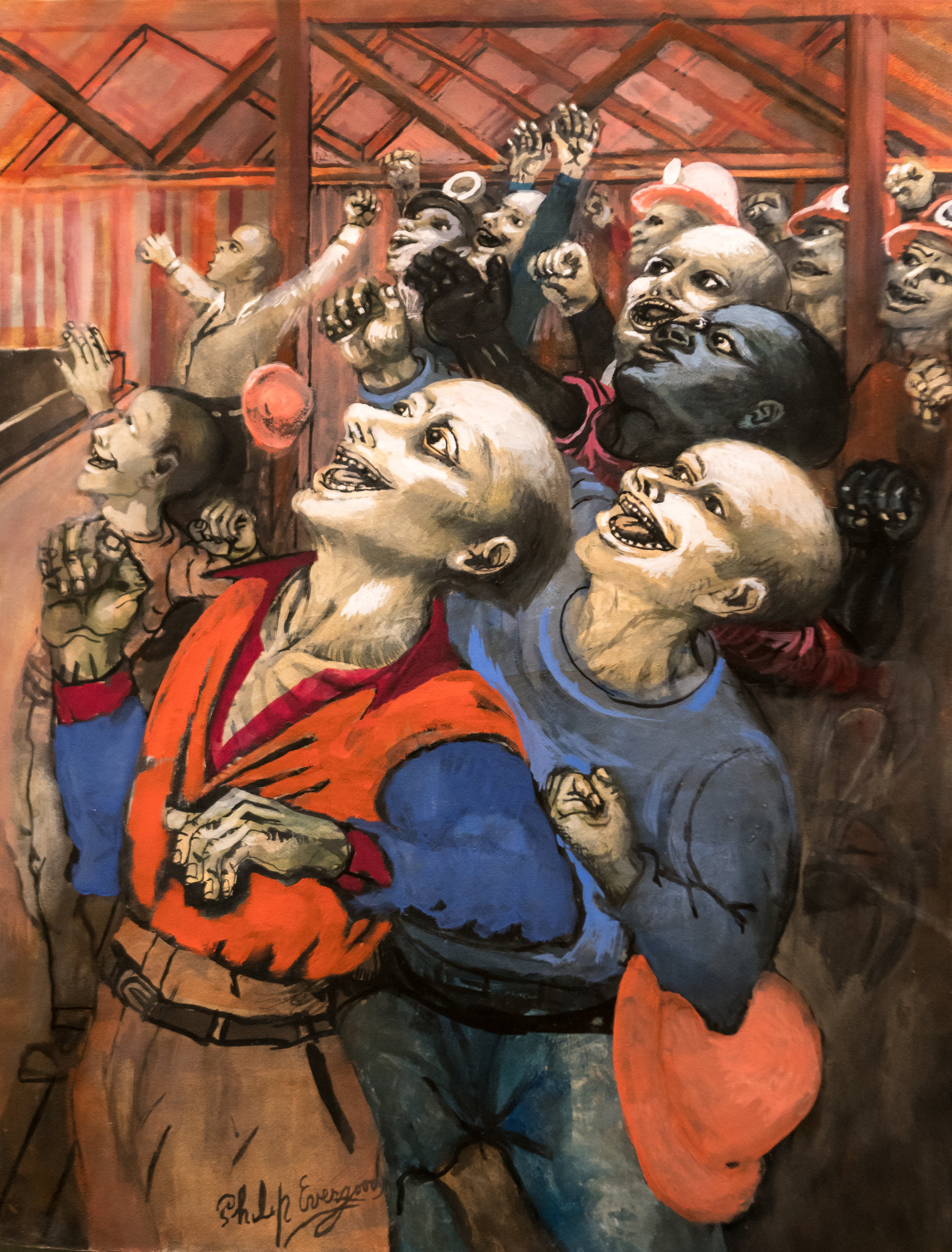Philip Evergood
Philip Evergood (1901-1973) was a modern artist best known for his colorful, exaggeratedly grotesque works from the 1930s and 40s, which focused largely on social commentary. Born Philip Blashki in New York City, his parents moved with him to London in 1909 and changed his last name to Evergood so he could attend Eton College and Cambridge University. He left early to pursue his artistic studies, first at the Slade School in London, where he studied sculpture with Havard Thomas; followed by the Art Students League in New York City, where he studied painting with George Luks and whose peers included etchers Philip Reisman and Harry Sternberg; then finally the Académie Julian in Paris, where he studied painting with André Lhote and Jean-Paul Laurens.
Evergood returned to the United States in 1931 and became heavily involved with the FAP/WPA — including participation in protests of layoffs from those programs and, when he was the manager of New York’s WPA easel project, fighting to ensure artists stayed on the payroll through budget cuts. He was president of the Artists’ Union, a member of the A.C.A. Gallery, and surrounded himself with likeminded artists, such as Ben Shahn, who used their art to explore and illuminate the plights of the working class and the corruption of politicians, police, and the military. Starting in 1943, Joseph Hirshhorn began acting as a patron for Evergood, allowing him to focus solely on making art.
Evergood relocated to Bridgewater, Connecticut in 1952. His later art took on a more surreal and religious bent, though always keeping the bold, expressive lines and social themes that had defined his earlier work. In 1960, the Whitney Museum of American Art honored Evergood with a retrospective.
